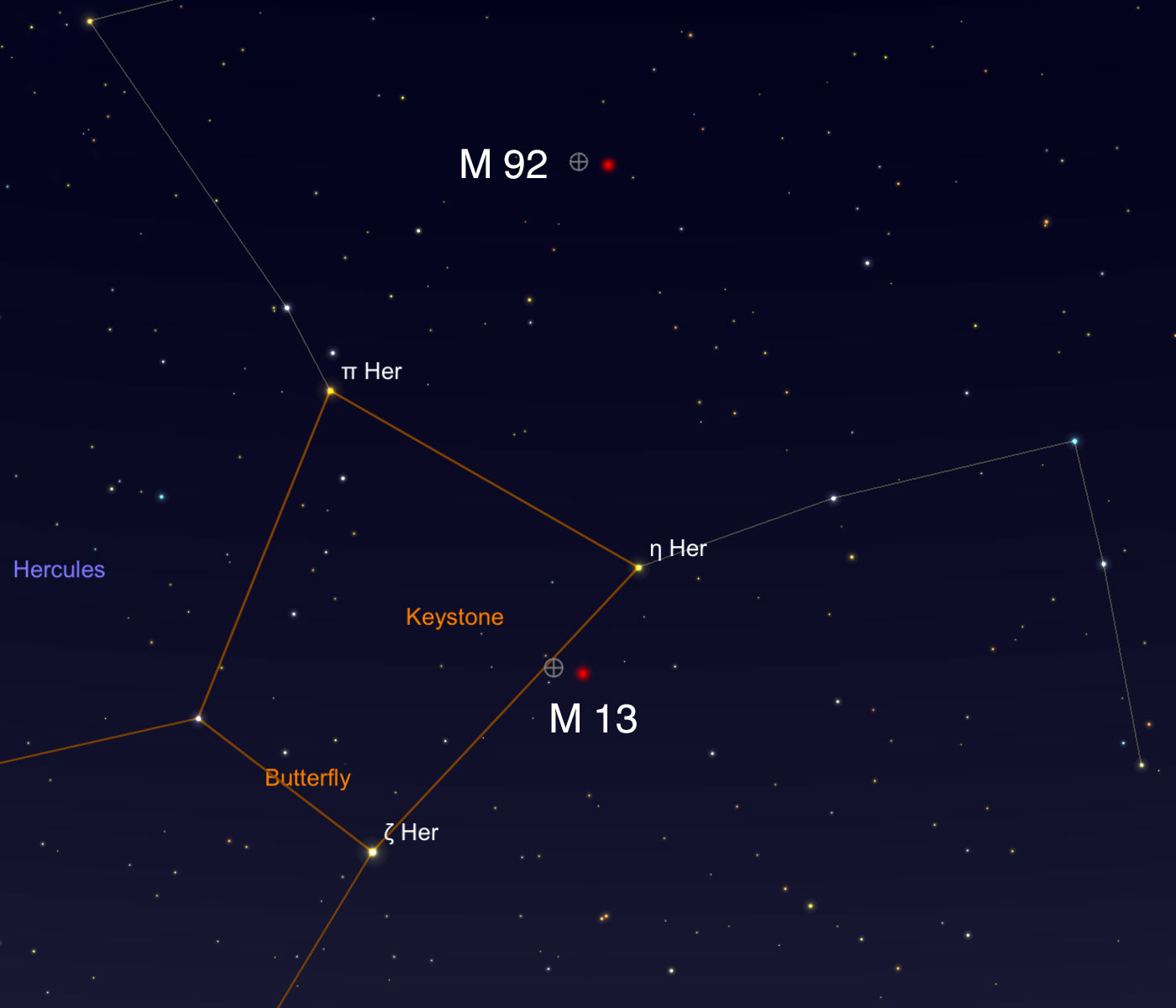
Introduction | Map | Find/Identify | Sketch | My Best Own Photos | My Own Observations | References || Appendix: My Own Photos
On this page I collect my observations of the globular star cluster M 92 (NGC 6341) in the constellation Hercules.
The globular star cluster M 92 in the Hercules constellation is somewhat smaller (depending on the author, it is 7 'or 8' in size) than its more familiar "brethren" M 13. It is located above the Keystone asterism, the most prominent part of the constellation and more difficult to find than M 13. I was able to clearly see the bright nucleus (M 92 appears somewhat more concentrated at the center than M 13), but not dissolve single stars - until August 23, 2019, on which I suceeded using averted vision (and maybe also with direct vision...) for the first time. In my binoculars, M 92 appears also very small.
M 92 (NGC 6341)
Size: 14' (Wikipedia)
Distance: 25,000 light years (Stoyan)
Rating: *** (Stoyan)
The globular star cluster M 92 is located above the Keystone asterism and a little more difficult to find than M 13. First find the Keystone asterism! (Image Courtesy of SkySafari Astronomy, www.simulationcurriculum.com)
Find: The globular star cluster M 92 in the constellation Hercules is located above the Keystone asterism and hard to find for me because there are no stars that can be used for orientation:
I therefore try to start from the two upper Keystone stars and form a kind of triangle with them to find M 92, which is generally quite tedious. Another approach is, to go up again about the height of the keystone trapezoid and then go 1/3 of the upper side to the right.
Find (2):In September 2024, I found somewhat brighter stars in the vicinity of M 92, which helped me to clearly "approach" and identify M 92 with binoculars. While SkySafari does not show any stars in the vicinity of M 92, this is the case with Stellarium. And these actually help to locate M 92, because they match what you see with binoculars. M 92 forms the eastern corner of a triangle (as a somewhat "fuzzy star"), while two stars, one above and one below M 92 to the west of M 92, form the other two corners of the triangle. Other stars further to the west help to identify the triangle as such. The star below the triangle is particularly bright. Here is an image of the position of M 92 created with Stellarium:
Identify: If you found a globular cluster in this way, then M 92 is already identified! (Image Courtesy of SkySafari Astronomy, www.simulationcurriculum.com)
The sketch by Michael Vlasov (DeepSkyWatch.com) provides a rough impression of what I observed in Summer/Autumn 2016 (my impression was much fainter and smaller than the sketch):
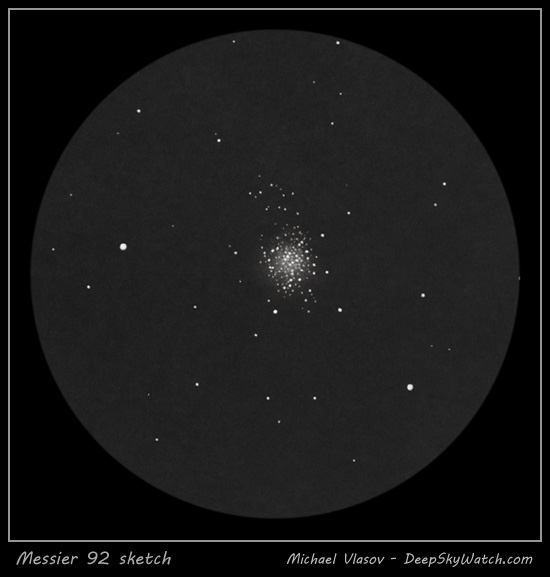
Sketch of the M 92 globular star cluster by Michael Vlasov (Copyright © Michael Vlasov 2016) - presented with the author's permission
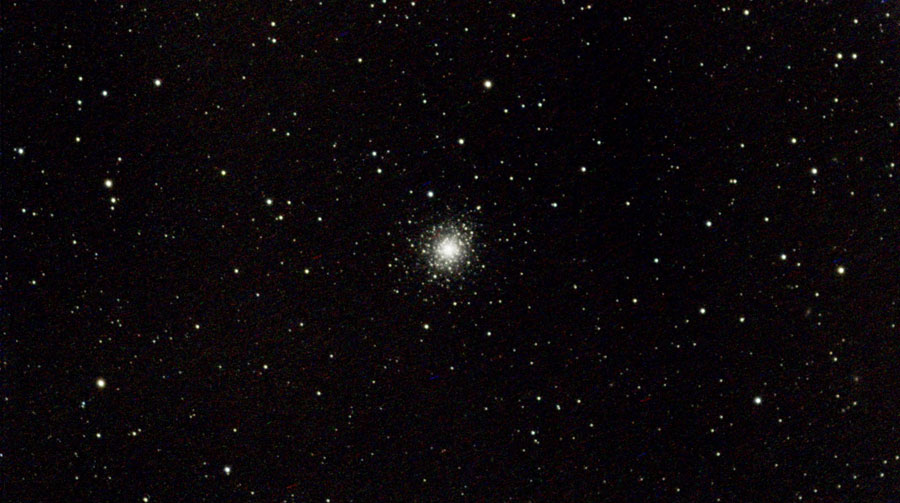 |
M 92, Jul 29, 2022 - original (29 frames = 290 seconds) |
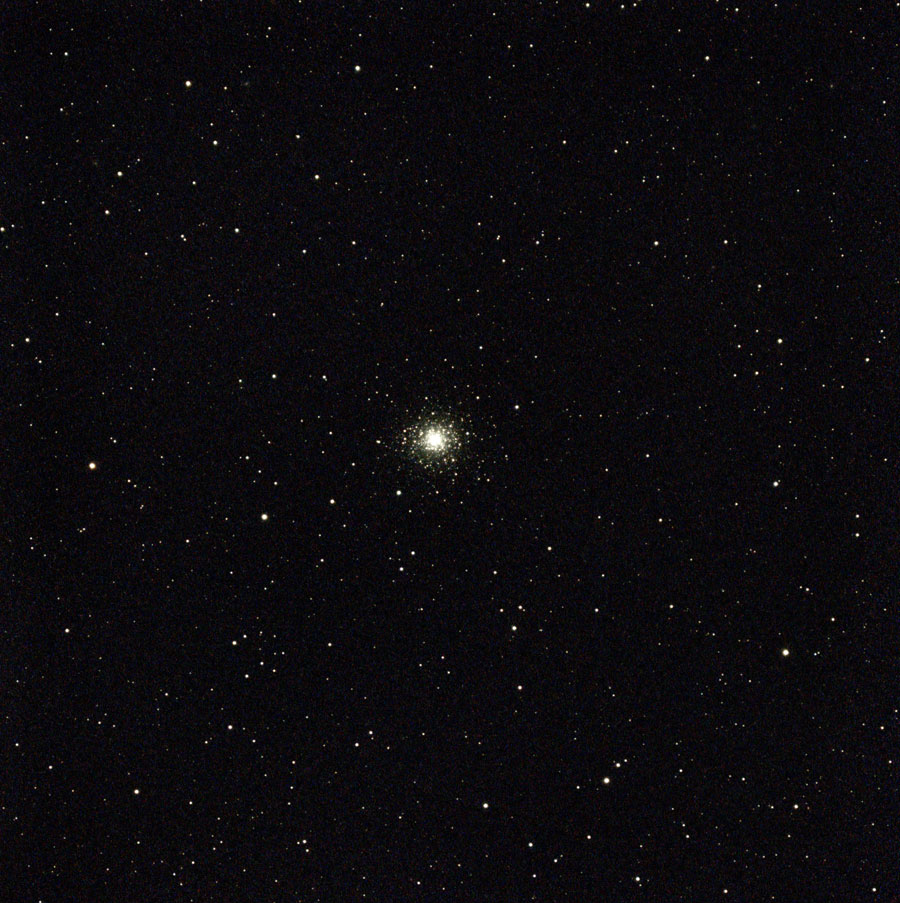 |
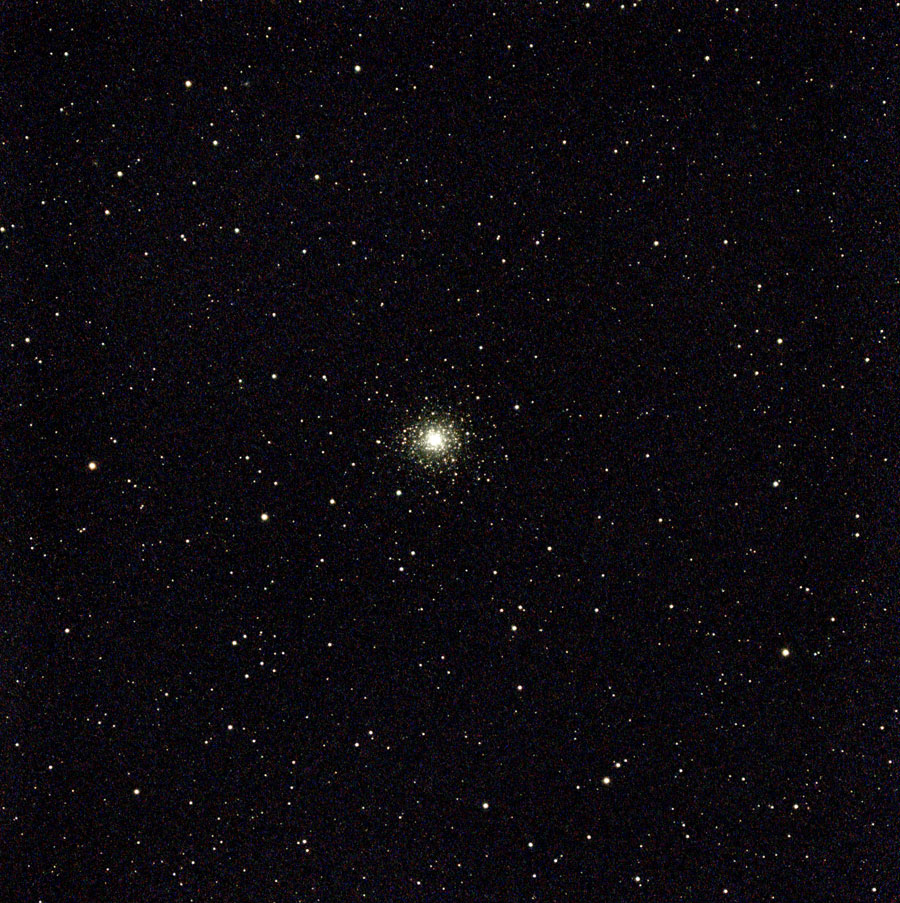 |
|
M 92, Jun 4, 2024 - 2000p (90 frames = 900s) |
M 92, Jun 4, 2024 - 2000p (92 frames = 900s), processed |
|
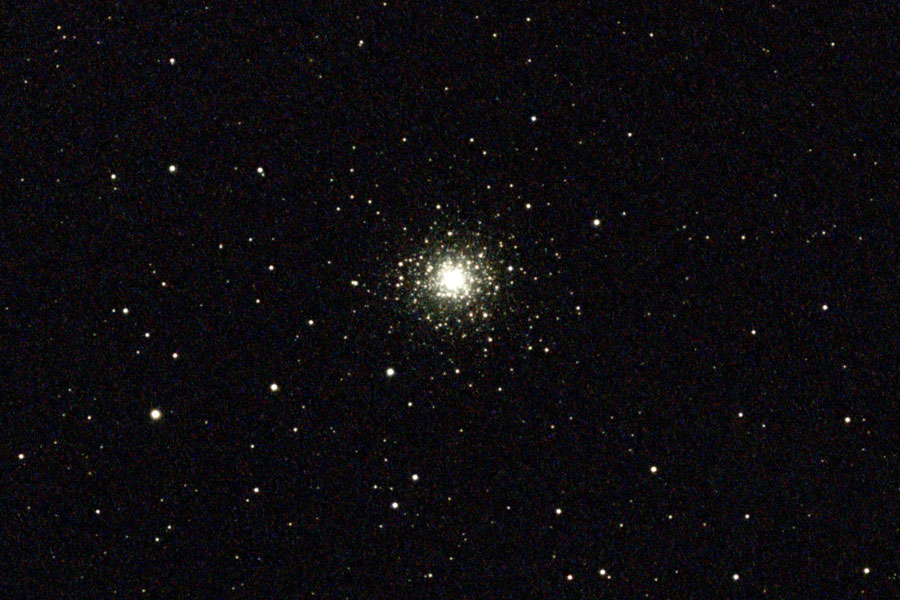 |
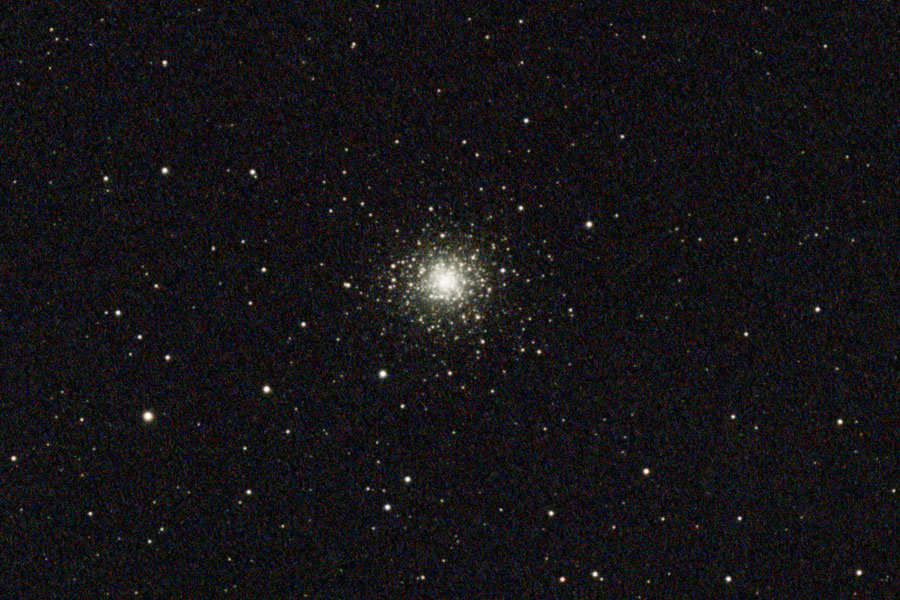 |
|
M 92, Jun 4, 2024 - 1800p (90 Frames = 900s), 1:1 section |
M 92, Jun 4, 2024 - 1800p (90 Frames = 900s), 1:1 section, TIFF processed |
|
 |
 |
|
M 92, Aug 24, 2025 - 1200p (90 frames = 900s), 1:1 section |
M 92, Aug 24, 2025 - 1200p (90 frames = 900s), 1:1 section, processed |
 |
M 92, Jul 29, 2022 - original (29 frames = 290s) |
 |
 |
|
M 92, Jun 4, 2024 - 2000p (90 frames = 900s) |
M 92, Jun 4, 2024 - 2000p (92 frames = 900s), processed |
|
 |
 |
|
M 92, Jun 4, 2024 - 1800p (90 Frames = 900s), 1:1 section |
M 92, Jun 4, 2024 - 1800p (90 Frames = 900s), 1:1 section, TIFF processed |
|
 |
 |
|
M 92, Aug 24, 2025 - 1200p (90 frames = 900s), 1:1 section |
M 92, Aug 24, 2025 - 1200p (90 frames = 900s), 1:1 section, processed |